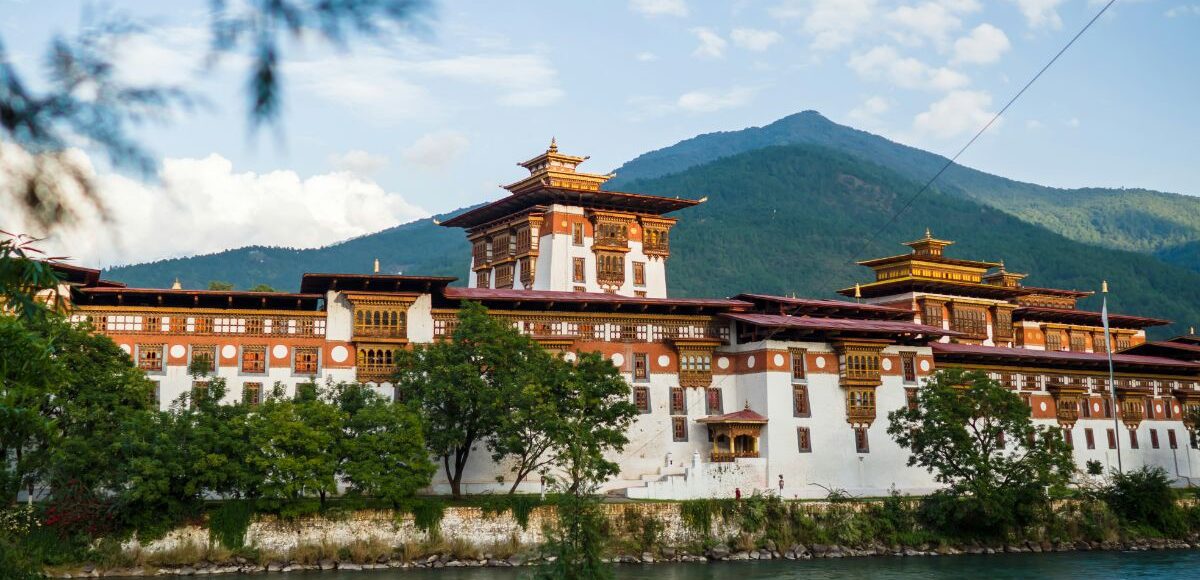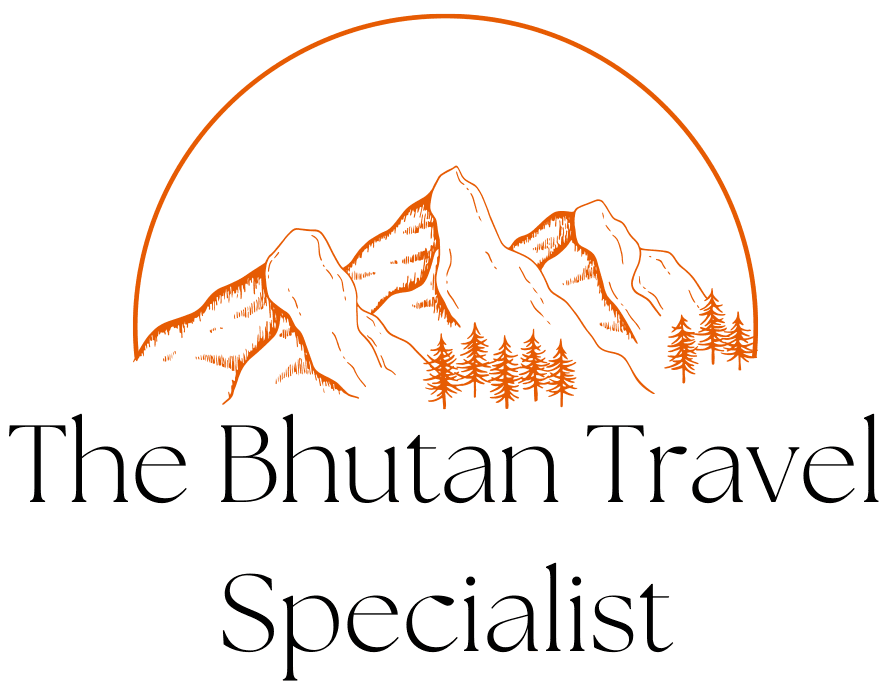Do not hesitate to give us a call. We are an expert team and we are happy to talk to you.
(+975) 17953762

Overview:
Embark on a magical 5-day journey through the enchanting landscapes of Bhutan. Begin your adventure in Paro, where you’ll be warmly welcomed and introduced to the unique Bhutanese culture. Explore the vibrant capital, Thimphu, and visit landmarks like the National Memorial Chorten and Thimphu Dzong. Travel to Punakha through the scenic Dochula Pass, visit Punakha Dzong, and admire the artistic Khamsum Yulley Namgyal Chorten. Return to Paro, exploring Chhimi Lhakhang and marveling at ancient monasteries and temples. Hike to the iconic Tiger’s Nest, a symbol of Bhutanese spirituality, and visit Kyichu Lhakhang. Depart from Paro with unforgettable memories of Bhutan.
Tour Highlights:
1. Explore Thimphu’s cultural landmarks, including the National Memorial Chorten and Thimphu Dzong.
2. Journey through the breathtaking Dochula Pass and visit Punakha Dzong, a winter residence for the clergy.
3. Discover the unique Khamsum Yulley Namgyal Chorten in Punakha, reflecting Bhutanese art and traditions.
4. Visit Chhimi Lhakhang and explore the ancient monasteries and temples of Paro Valley.
5. Embark on a thrilling hike to the iconic Tiger’s Nest (Taktsang Monastery) and visit Kyichu Lhakhang.
6. Depart from Paro with cherished memories of Bhutanese culture, landscapes, and spirituality.
Paro International Airport (Google Map)
Welcome to Paro, Bhutan! As you land at Paro International Airport, our friendly guide will be there to greet you. Take it easy today as we adjust to the altitude. We’ll drive to Thimphu, where you’ll check into the hotel and savor your first taste of delicious Bhutanese cuisine. Our first stop is the National Memorial Chorten, a beautiful monument dedicated to the late King Jigme Dorji Wangchuk. Next, we’ll visit Thimphu Dzong, the largest fortress in Bhutan and the King’s office. On weekends, join the vibrant Weekend Centenary Farmers’ Market by the river, where locals gather to sell their agricultural products. In the evening, explore Thimphu Town at your leisure.
From Thimphu, we’ll embark on a scenic journey to Punakha. Along the way, we’ll pass through the breathtaking Dochula Pass, adorned with 108 chortens. These chortens were built by Queen Mother Ashi Dorji Wangmo Wangchuck to commemorate Bhutan’s victory and honor the lost souls. In Punakha, we’ll visit Punakha Dzong, a magnificent fortress dating back to 1637. It serves as the winter residence for the clergy and showcases the remarkable Bhutanese architecture. Another highlight is Khamsum Yulley Namgyal Chorten, a unique structure built by Queen Mother Ashi Tshering Yangdon Wangchuck over eight and a half years, reflecting the rich Bhutanese art and architectural traditions.
Today, we’ll journey back to Paro from Punakha. Along the way, we’ll stop at Chhimi Lhakhang, a charming temple known as a pilgrimage site for women hoping to conceive. In Paro Valley, you’ll discover the beauty of Bhutan’s ancient monasteries and temples. The valley is also home to Mount Chomolhari, a majestic peak that provides glacier water to the Pachu River. Explore Paro Dzong, an impressive fortress that serves as the administrative center, and visit the ruins of Drukgyal Dzong, a poignant reminder of Bhutan’s historic victories.
Get ready for an unforgettable experience as we hike to one of Bhutan’s most iconic landmarks, Tiger’s Nest, or Taktsang Monastery. The one-hour hike to the cafeteria offers breathtaking views of the monastery clinging to the cliffside. Legend has it that Guru Padmasambhava arrived here on the back of a tigress in the 8th century. Afterward, enjoy a delicious local lunch and visit Kyichu Lhakhang, one of Bhutan’s oldest and most revered temples.
It’s time to say goodbye to the enchanting land of Bhutan. Catch an early flight back to Singapore, carrying with you cherished memories and new friendships. We hope to welcome you back soon to this captivating Himalayan country. Tashi Delek!
There are 19 languages spoken in Bhutan, but the national language is Dzongkha. English is used throughout Bhutan’s education system, so it is widely used and understood.
Bhutan is a year-round destination. There are four seasons: summer (June to August), autumn (September to November), winter (December to February) and spring (March to May). But because of the range of altitudes in the country, and the influence of the north Indian monsoons, the climate is incredibly varied.
In the south, the humid, subtropical climate is fairly consistent year-round, with temperatures between 15oC and 30oC. Central Bhutan, with its temperate forests, has a more seasonal climate, with warm summers and cool, dry winters. The northern regions are much colder during winter. Because of the high altitude, mountain peaks are snowy year-round and the lower reaches remain cool in summer.
In summer, the Indian monsoon season runs from late June or July to late September, mostly affecting the southern regions. Most farming activities take place in the summer, when crops thrive in verdant landscapes.
Autumn, from late September or early October to late November, follows the rainy season. It is characterised by bright, sunny days and some early snowfall at higher elevations. It’s the season of feasts and festivals as farmers reap the fruits of their work.
From late November until March, the crisp, clear and sunny winter sets in, with frost throughout much of the country and snowfall common above elevations of 3,000 metres. The winter northeast monsoon brings gale-force winds at the highest altitudes through high mountain passes, giving Bhutan the name Drukyul, which means Land of the Thunder Dragon in Dzongkha (Bhutan’s national language).
Bhutan’s generally dry spring starts in early March and lasts until mid-April. It is a botanist’s delight, with nature in full bloom. Summer weather commences in mid-April with occasional showers and continues to late June.
Bhutan’s currency is called ngultrum. It’s 1:1 with Indian rupees.
Three different electrical plugs are used throughout Bhutan: the British plug (three square pins, compatible with type G sockets), the European plug (two round pins, compatible with type C socket) and the Indian plug (three thick round pins, compatible with type D sockets). It’s a good idea to bring adaptors for all three.
For telephone calls, Bhutan’s country code is +975. Make sure you add this to the beginning of any number if calling Bhutan from abroad.
You can apply online for a visa by completing this application form, or if you’re travelling with a tour operator, they may apply on your behalf. Read more about the visa here.
Visitors from Bangladesh and the Maldives requiring a visa can apply either online before travelling or in person upon arrival in Bhutan.
There is a one-off fee of US$40 for the processing of your application. This is payable at the same time as your Sustainable Development Fee (SDF), as part of the process of submitting your visa application.
The SDF is USD 100 per night for adults from all countries except for India. Children aged between 6 years and who have not yet turned 12 are eligible to pay USD 50 per night. Children who have not yet turned 6 years old do not have to pay any SDF.
The SDF for Indian nationals (showing a valid Indian passport or Voter ID card) is Nu. 1,200 (or the equivalent amount in Indian rupees) per person, per night. Children aged between 6 years and who have not yet turned 12 are eligible to pay Nu./INR 600 per night. Children who have not yet turned 6 years old do not have to pay any SDF.
Tourists visiting Samtse, Phuentsholing, Gelephu, and Samdrupjongkhar towns for 24 hours need not pay Sustainable Development Fee (SDF) beginning April 14, 2023. The waiver will be enforced for a year. The SDF waiver will only apply for tourists who do not travel beyond the designated zones of border towns. However, SDF will apply for visitors who travel beyond the designated zone of border towns.
Tourists will be charged SDF if they go beyond Gurung Basti in Samtse, and beyond Rinchending Checkpost in Phuentsholing. The designated zone in Gelephu is at Aipoli Bridge and Pinchinna checkpost in Samdrupjongkhar.
